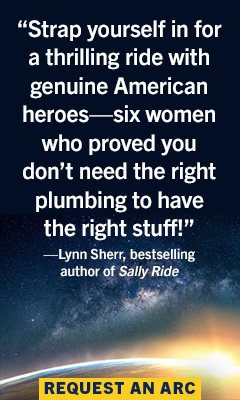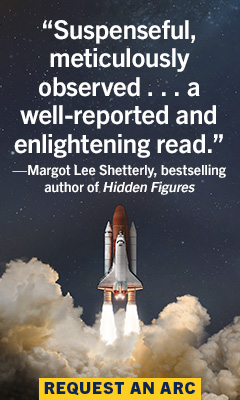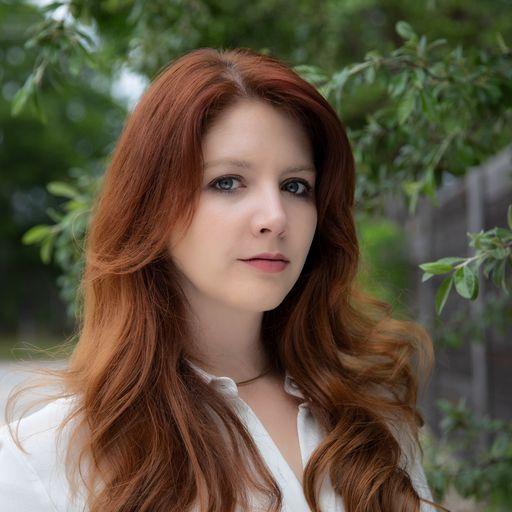The Six: The Untold Story of America's First Women Astronauts
by Loren Grush
Loren Grush, space reporter for Bloomberg News, spectacularly profiles the first American women to fly into space in the riveting and expansive The Six: The Untold Story of America's First Women Astronauts. Sally Ride, Judy Resnik, Anna Fisher, Kathy Sullivan, Shannon Lucid, and Rhea Seddon vividly come to life in Grush's intricately researched and detailed work, which traces their entry into NASA, extensive training, and first flights in the Space Shuttle program. This insider look, which pulls from more than 100 hours of Grush's firsthand interviews, NASA's Oral History Project, and substantial archival footage and documents, as well as hours of transcribed audio from shuttle flights, is a thrilling dive into the lives of some of history's groundbreaking women.
A desire to explore the unknown, a fascination with science, a need for a life passion. These drives initially connected "the Six," who would become the first American women to fly into space: Ride, an introverted tennis player and self-proclaimed underachiever studying astrophysics; Resnik, a whip-smart engineer who "yearned for something she could throw her whole self into"; Fisher, a surgical intern determined to enter space after Alan Shepard's first flight; Sullivan, an oceanographer bent on diving "as deep as she could below the Earth's surface"; Lucid, a sci-fi fanatic and biochemist who trained to visit Mars inside a cardboard spaceship; and Seddon, an emergency room resident aware that space stations might need doctors like her. What was once a career that only men could pursue due to requirements that women were prevented from meeting (i.e., the need for military jet pilot experience) was now open to specialists from additional fields.
The Six, as Grush's astounding details reveal, all applied without hesitation (Resnik even cut her hair to seem more professional, obtained a pilot's certificate, and cold-called Apollo astronaut Michael Collins for advice) and entered the interviews feeling hopeful but "completely foreign" in Johnson Space Center. "I've got no idea what any of this is," Sullivan thought. For some, the process "felt a bit like walking into an inquisition," but they answered even ridiculous questions with firm honesty. When asked whether she would give up becoming an astronaut for the man of her dreams, Seddon indicated "that man wouldn't be the man of her dreams if he asked her to do that." Ride, asked if she ever had amnesia, joked, "I don't know. I can't remember." Grueling testing began after the Six were invited to work for NASA. Grush describes invasive medical procedures wherein some women outperformed the men, followed by training that included practicing bailouts and ejections as well as swimming under fallen parachutes. Though Ride would be the first to fly (she was deemed most likely to take her selection "in stride"), all six contributed their skillsets to various missions, the pivotal moments of which Grush brings to the page with an immediacy that feels like being alongside the women themselves.
The full scope and smallest details that Grush shares are breathtaking, making this space history an invaluable contribution to the genre. Her attention to each individual allows their portraits to be multidimensional, even with the common ground the women shared. The sexist treatment they endured--primarily from the media but at times within NASA itself--backdrops much of their journey. The media often objectified the women; one newspaper called them "eye-popping space gals." A reporter asked Ride, if things go wrong, "do you weep?" Another asked Fisher whether motherhood was compatible with being an astronaut--a question never asked of male astronauts regarding fatherhood.
The Six cemented their belonging with an admirable confidence; Grush affirms their "united front" with inspiring and at-times thrilling moves by the Six themselves, transforming her narrative into a compulsive read. "Let me tell you how I feel about modesty at a moment like this... I have none," Sullivan maintained when stripping naked before "a room full of technicians" to don her spacesuit. When an astronaut held a door open for Ride, "she shoved him through the door and held the door open for herself." Resnik, when asked by engineer Mike Mullane, "Would you like to swing on my vine?" responded, "First I'll have to tie a knot in it so I have something to hold on to."
The respect eventually garnered from the men of NASA for the women as equals receives its due attention. Bob Crippen requested Ride specifically for one mission, while John Fabian touted Lucid's ability to remain "calm and collected" and to complete tasks with absolute correctness. Grush also endeavors to spotlight the scientific and technological advancements occurring during the era in which these women were active, and ample attention is given to the controversy surrounding the O-ring failure that led to the Challenger disaster and the death of Resnik. The Six takes readers on the roller-coaster journey of the women at its heart, and is sure to be enjoyed by fans of titles like Hidden Figures. --Samantha Zaboski








